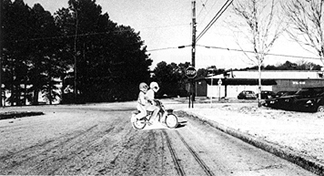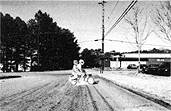*
Note : this article was originally written for videography,
but also applies to still photography.
By George S. Pearl
Video has leaped into our court system, documenting
everything from depositions to the reconstructed view of what a driver may
have seen out of the front window of his car. This article will focus on
video as demonstrative evidence. Video is considered photography under the
law of evidence.
Evidence photography takes on many forms, and I view it as
the 'giant killer' in a lawsuit. As a lawyer, if you think of photography
in court as simply a snapshot and tell your clients to "just take some
pictures of the problem", then you are unaware of what a professional
evidence photographer can do. Your entire case could develop a new posture.
Strong photographic evidence, professionally produced, can be more persuasive
and powerful than a whole row of witnesses trying to explain what they saw.
One of the biggest mistakes modern lawyers make with evidence
is not obtaining the correct visuals to match the requirements of the individual
case. Although video has entered our courts quite forcefully, sadly, many
engaged in the production of these electronic images have no knowledge of
either evidence photography or even basic cinematography techniques. Most
lawyers know little about the details of good photography because their
expertise is practicing law. However, they have seen a lawyer friend successfully
use video in a case, and now they want to use it for their own case.
An expert evidence photographer has many photographic techniques
at his disposal. Video is only one of many. Professional judgment as to
the viability of one medium as opposed to another should be left to the
expert. Video may not be the answer to every problem in the recording and
presenting of visual evidence.
In the field of evidence photography, techniques utilized by
a professional evidence photographer include motion picture film cinematography,
still photography, animation, video, ultraviolet photography, aerial, underwater,
night vision photography, and many other types of specialized criminalistic
laboratory photography such as time lapse and wide field macro photography,
panorama and high speed photography.
Ignorance of evidence photography and its capabilities can be devastating
to an attorney in any type of case. For example, it may actually work against
an attorney who had a video produced of what the driver saw instead of using
a motion picture film projected on a large screen.
Let me explain.
First of all, only half the blame is the lawyer's for using
the wrong evidence; the other half of the blame goes to the video person
who held himself out as an evidence photography expert. The display of video
images over a TV screen falls under the same fundamental optical and perspective
viewing rules as does any other photographic image. Jurors viewing a 19
inch screen placed several feet in front of the jury rail are not seeing
a driver's view in the correct perspective and are being misled as to the
actual distances involved in the scene.
There is a mathematical formula that must be used to determine
the correct viewing distance in all types of photographic evidence : the
viewing distance in inches equals the focal length of the lens in inches
time the enlargement.
In the hypothetical case using the 19 inch television monitor, let's say
the scene was shot with a camera having a 1/2 inch tube and the zoom lens
set at 35mm. The jury would need to sit at a distance of 17.225 inches away
to perceive the scene as the driver did. if you were the defense attorney
in this case and the plaintiff was attempting to mislead the jury with the
misuse of a visual evidence tool (probably due to ignorance), would you
object ? Would you even know to object ? Would you know that he might be
actually helping your case ?
Look at the two photographs of the street scene shown here. Both photographs
were printed from the same negative in exactly the same manner. The only
difference is in the size of the two photographs.
Note the distance from which
you are viewing the children on the motorbike in each photo. The failure
to follow the above described formula of perspective causes you and the
jury to be misled as to the distance between the children and the beginning
of the skid marks.
|
Does the jury see what the driver saw ? |
 |
For evidence photography to be effective, it must recreate
a scene as accurately as possible for a jury. The difference between
a small photograph and a large photograph, or a standard TV monitor
and a wide projection screen, may be critical. |
|
Throughout the country there are a number of certified photographers capable
of providing excellence in their field for the photographic demands for
your cases. To be referred to another Board Certified Evidence Photographer,
anywhere in the United States, and some outside, call us at ALPS, and we
will happy to assist you. Even though we may refer you to a reputable, Board
Certified Evidence Photographer, you should still ask for a resume and references,
as well as making sure that photographer will be around later if needed
in court.
The Professional Photographers of America has over 2,000 members, but only
six photographers nationally have passed the board review to become Qualified
Evidence Photographers under the organization's rigid qualifications program.
George Pearl, President of Atlanta based ALPS Evidence & Photo,
is a certified evidence photographer and a fellow of the Evidence
Photographers International Council and Certified Professional
Photographer of the Professional Photographer of America.
He is a Certified Questioned Document Examiner and Handwriting Expert with
the Association of Forensic Document Examiners. He also
serves as a board member of the Demonstrative Evidence Specialist
Association dedicated to maintaining the highest standards in the
production of demonstrative evidence.
* This article was first published in THE VERDICT of June / July / August of 1990.

